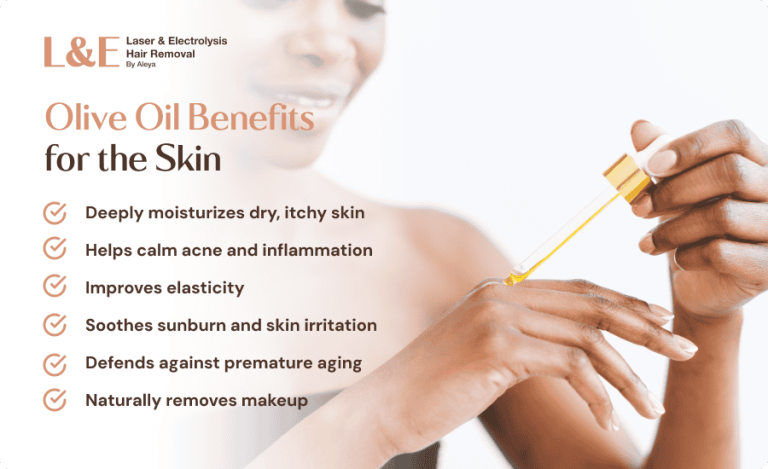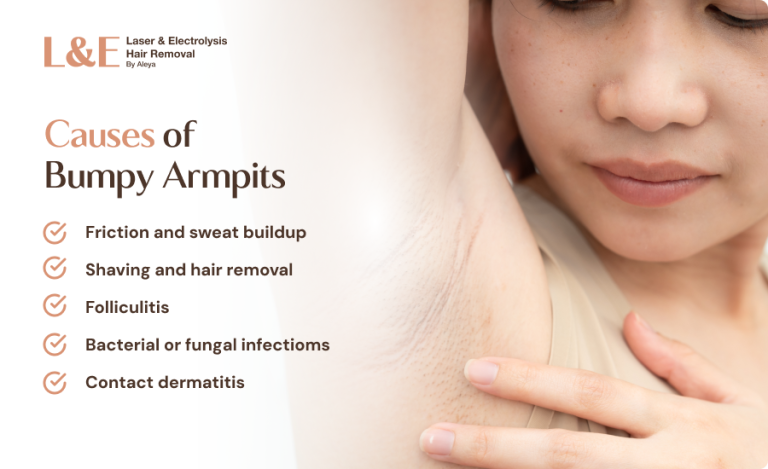Laser Burn Treatment at Home: Tips & Natural Remedies
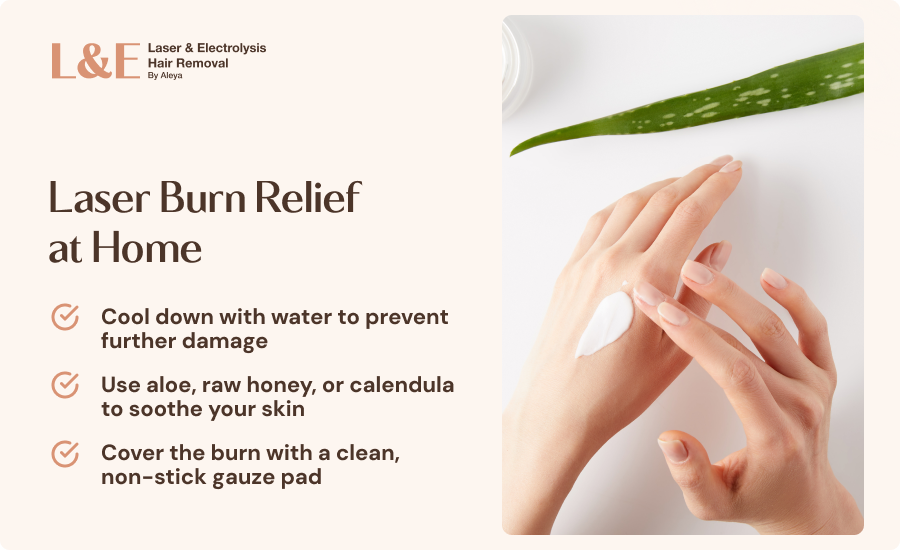
Laser Burn Treatment: Key Takeaways
- Cool the burn immediately with water to lower skin temperature and limit damage
- Aloe vera, raw honey, and calendula are natural remedies that can help calm inflammation, promote healing, and protect the skin barrier
- Stick to gentle products, cover the burn only if it’s at risk of rubbing or exposure, and keep an eye out for any signs of infection
Laser hair removal is on the rise.
In 2023, people around the globe spent over $1 billion to get smooth, stubble-free skin for longer.
With nearly 19% annual growth through 2030, laser hair removal is fast becoming the go-to for those who want smoother skin without the daily upkeep.
But as demand rises, so does the risk of complications.
Laser hair removal burns can occur from treating tanned and sensitive skin or using the wrong laser for your skin type.
In this guide, you will:
- Learn how to treat laser burns at home safely and effectively
- Know which burns you can manage and when to see a doctor
- Recognize what laser burns look like and how long they typically last
Effective and Safe Laser Burn Treatments at Home
Home remedies can go a long way in soothing pain, calming inflammation, and even speeding up healing after a mild burn.
But remember, not all burns are created equal.
Natural remedies can work well for mild ones, but it’s best to have a skin expert, like a dermatologist, take a look at anything more serious.
Here’s how to get rid of laser burn marks:
1. Assess the Severity of the Burn
Laser burn treatments work best when you start them early.
Before beginning any treatment, determine how serious the burn is so you can respond appropriately and prevent further harm.
Here are the types of burns you can treat at home:
- First-degree burns, which cause redness and pain but do not blister
- Small second-degree burns, which might cause blisters but are limited in size and do not cover sensitive areas
Burns that require medical attention include:
- Burns that are larger than three inches in diameter
- Burns on the face, hands, feet, groin, buttocks, or over major joints
- Burns accompanied by signs of shock, such as fainting, pale complexion, or rapid breathing
Keep in mind: Burns that look charred, leathery, white, or oddly painless might seem less serious, but they’re not. These are signs of a third-degree burn, which can mean nerve damage.
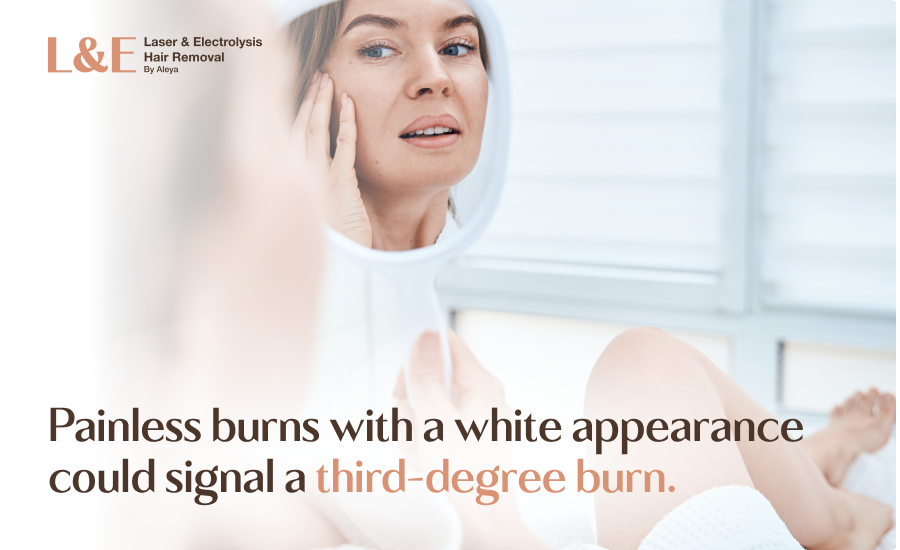
2. Cool the Laser Burn
As soon as you can, run cool water over the burned area for 10 to 20 minutes.
This helps bring down the skin’s temperature and prevents the burn from getting worse.
No running water nearby? A clean, cool, damp cloth works too.
Don’t use ice or ice water, as extreme cold can cause additional tissue damage.
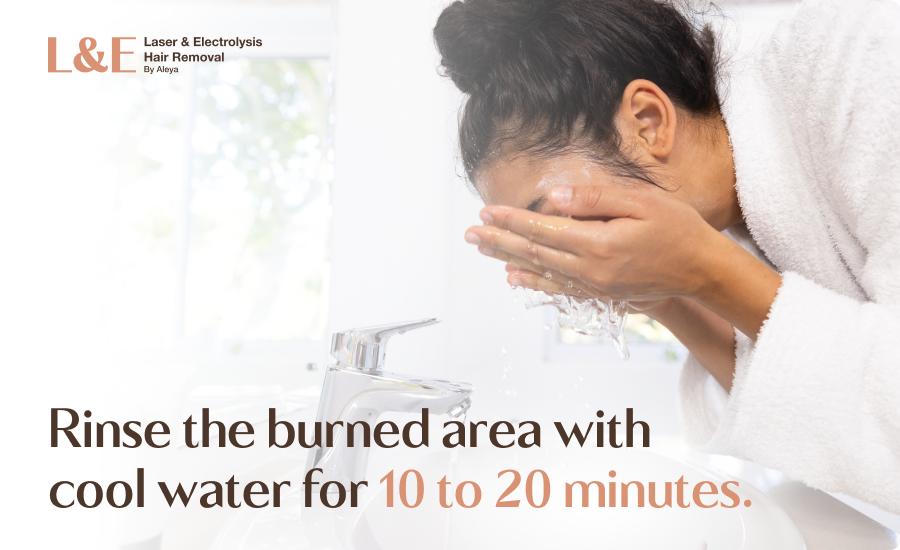
3. Opt for Natural Remedies
Mother Nature knows a thing or two about healing burns, and some of her best remedies are simple and easy to find.
Aloe vera is a favorite for calming laser burns. Its cool, hydrating gel helps relieve pain, reduce redness, and can even prevent blistering if you apply it early.
For the best results, stick to pure aloe vera gel or use the fresh pulp from an aloe leaf.
Raw honey, especially manuka honey, is another great option. It’s been shown to:
- Ease inflammation
- Fight off bacteria
- Support faster healing in minor burns
- Lock in moisture and protect your skin as it recovers
Calendula, a soothing flower often found in natural ointments and balms, has anti-inflammatory and skin-repairing benefits.
It can help improve blood flow and support new skin growth, which makes it especially helpful for healing first- and second-degree burns.
No matter which natural remedy you use, conduct a patch test first. A gentle start is key to any effective laser burn treatment, especially for sensitive skin.
4. Remove Tight Items
Gently take off any rings, bracelets, or tight clothing around the burned area before it starts to swell.
This helps avoid pressure or restricted blood flow if the area becomes puffy.
5. Apply a Soothing Ointment or Moisturizer
Once the area is clean, apply ointment or plain petroleum jelly to keep the skin hydrated and help it heal.
Avoid butter, toothpaste, or oils, as they can trap heat and lead to infection.
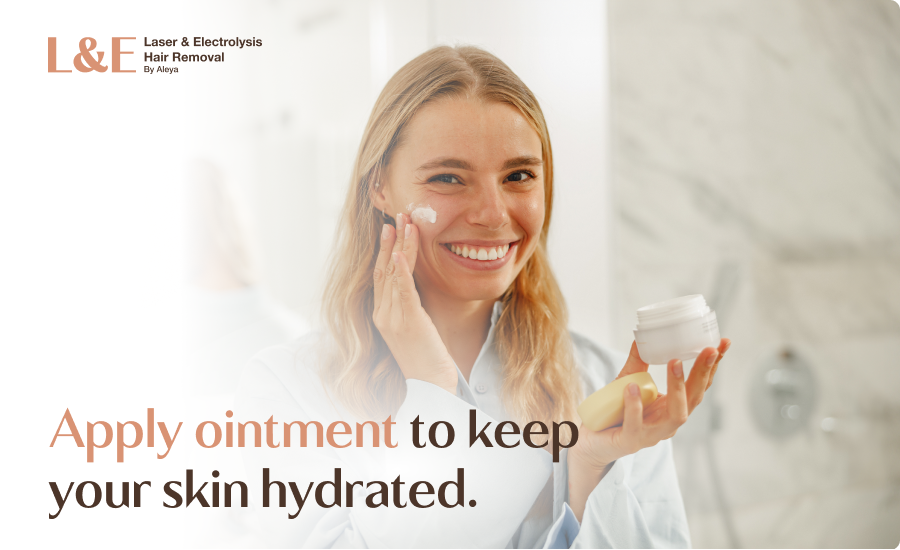
6. Cover the Burn With a Sterile Bandage
Cover the burn with a clean, non-stick sterile gauze pad, and secure it loosely so there’s no pressure on the area.
7. Manage Pain and Inflammation
Feeling sore or swollen? Over-the-counter meds like ibuprofen or acetaminophen can ease the pain and calm inflammation.
Just be sure to follow the dosing instructions on the label.
8. Monitor the Burn and Change Dressings as Needed
Change the bandage once a day or any time it becomes wet or dirty.
Continue monitoring the burn for signs of healing or any signs of infection, such as increased redness, swelling, warmth, pus, or a fever.
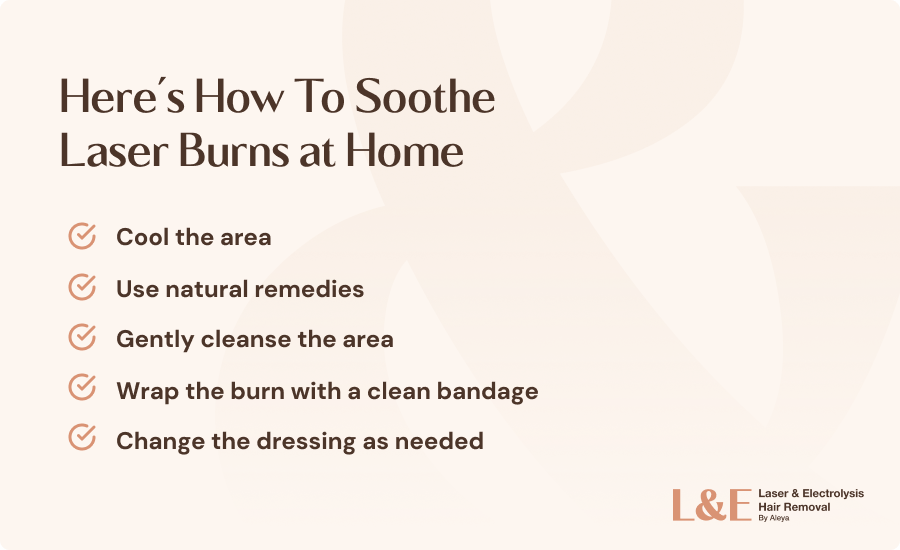
What Do Burns From Laser Hair Removal Look Like?
Laser hair removal burns often show up as redness, swelling, and tenderness, similar to a mild sunburn.
In more serious cases, you might notice blisters, changes in skin color, or even scarring.
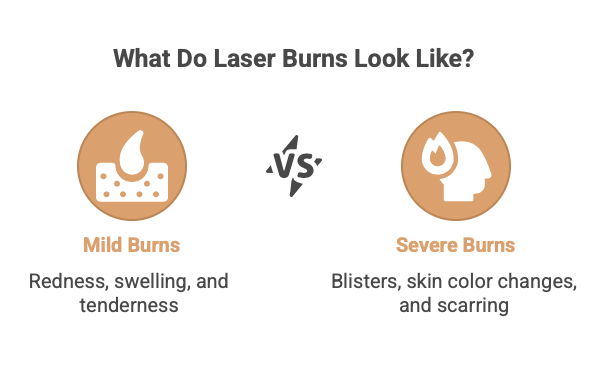
How Long Do Laser Hair Removal Burns Last?
Most mild laser burns heal within one to two weeks.
If the burn is more severe, it could take longer and may need special aftercare, like a post-laser balm or medical-grade barrier cream.
Keep an eye on the area, and if it’s not improving within a week, reach out to your laser specialist or dermatologist.
Feel the Difference of Expert Laser Hair Removal at Laser by Aleya
Some people do experience laser hair removal side effects, but they’re usually mild, like temporary redness or swelling that fades within hours.
Serious burns are rare and typically heal without scarring when treated properly by a healthcare professional.
That’s why expert care matters.
At Laser by Aleya, we tailor every treatment to your skin type and hair profile, using safe, effective techniques to minimize risk and maximize results, so you can feel confident from your very first session.
Laser Burn Treatment: FAQs
What are the chances of getting a laser hair removal burn?
Common reasons laser burns occur include:
- Your skin was recently tanned or sun-exposed
- You’re taking medications that increase sun sensitivity, like certain antibiotics or acne treatments
- Your laser specialist used the wrong settings or laser type
Do laser hair removal burns go away?
Yes, most laser burns are mild and heal on their own within a few days to a week.
More serious burns may take longer but usually heal without scarring if properly treated.
What can you do to speed up healing?
There are a few simple steps you can take to help your skin heal faster and lower the risk of scarring, especially after laser hair removal.
- Use gentle, fragrance-free products and avoid anything that might irritate the skin
- Apply a cool compress to calm inflammation and soothe any burning or tenderness
- Don’t pick or scratch at the burn or any scabs that form
- Stay out of direct sunlight, skip hot showers, and avoid any heat sources that could make the burn worse
Just remember that sticking to a consistent laser burn treatment routine can help speed up recovery and reduce the risk of scarring.
Should I avoid makeup or skincare products on a laser burn?
Yes. Until the area fully heals, skip makeup, exfoliants, retinoids, or any harsh skincare products. These can worsen irritation or delay healing. Stick with gentle, healing formulas only.
Can a laser burn leave a scar?
It’s rare with mild burns, but deeper burns might cause scarring or dark/light spots (hyperpigmentation or hypopigmentation).
Treating the burn early and protecting it from the sun can all help prevent lasting marks.
When should you seek medical care for laser hair removal burns?
See a doctor if your laser burn is painful, starts to blister, shows signs of infection like pus or spreading redness, or if it hasn’t started to heal after a week.
Is it good to moisturize after laser hair removal?
Yes. Moisturizing helps soothe and hydrate the skin after treatment.
Use a gentle, fragrance-free moisturizer or aloe vera gel to calm any redness or irritation.
Avoid heavily scented or active-ingredient products for at least one to two days, as they can cause irritation on freshly treated skin.
Can you take vitamin C after your laser hair removal session?
Yes, you can take vitamin C after your laser treatment.
Oral vitamin C (in food or supplements) supports skin healing and collagen production.
If you’re using a topical vitamin C serum, wait at least one to two days before applying it to the treated area to avoid irritation.
